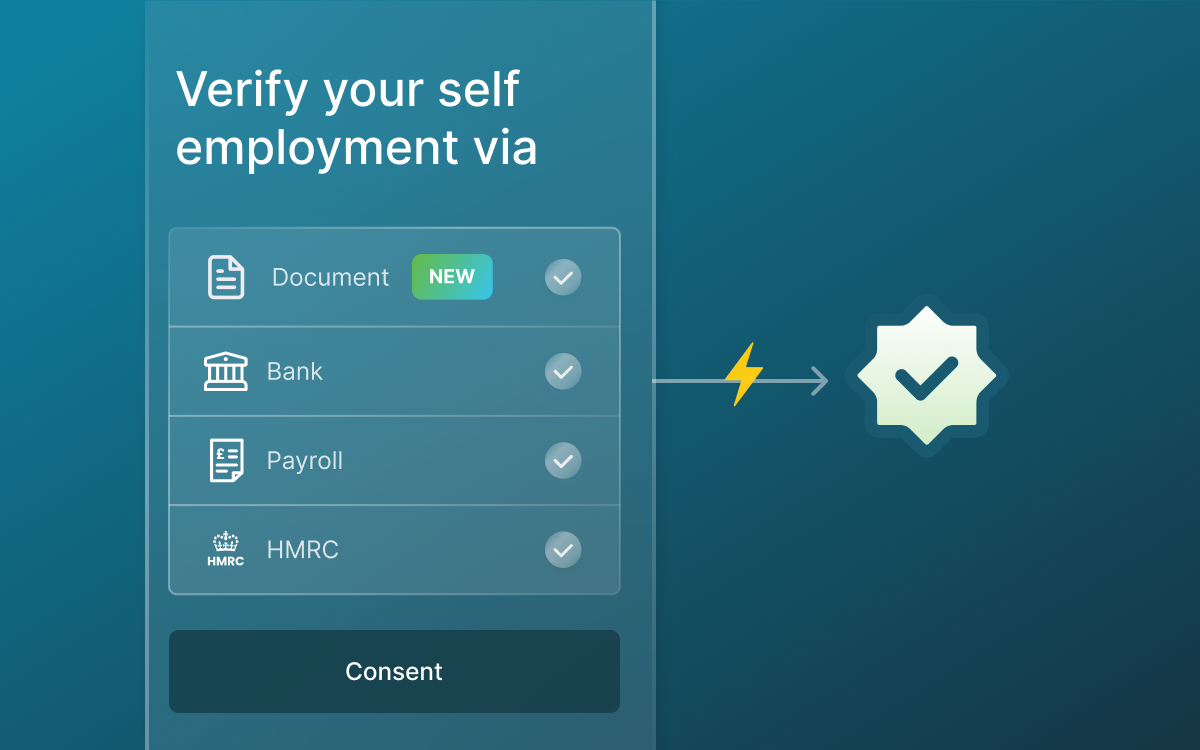

Self-employment is no longer the exception. It’s a fundamental and growing way of working. For many, it represents freedom, flexibility and control. But for HR, compliance and referencing teams, it represents complexity.
Whether you work in Background Screening, Tenant Referencing or Financial Services, verifying an applicant who works for themselves is often where automation breaks down and manual work begins. We break down what “self-employment” really means, why verifying it is difficult, where the current approach fails, and how our structured verification waterfall can finally make it work.
Employment is no longer always linear. While traditional full-time roles remain, many individuals now build careers through contract work, freelance projects, or part-time engagements. Some run their own businesses, others work through umbrella companies, and many combine PAYE roles with self-employed income.
As these patterns evolve, a growing number of applicants fall outside the scope of what traditional referencing systems were designed to handle. This creates friction in onboarding: not because the individual cannot be verified, but because the system wasn’t built for how they work.
Importantly, the term “self-employment” is often used as an over-simplified catch-all for non-standard employment. This broad label frequently (and incorrectly) includes certain PAYE categories such as umbrella or agency contractors—workers who are, in fact, taxed via PAYE and whose income can be verified more easily than genuinely self-employed individuals. The table below breaks down the work engagement types that either are genuine periods of self-employment, or are frequently misclassified as such:
Each category reflects a different way of working, with its own format of documentation, earnings pattern and complexity when it comes to verifying income or employment. Traditional systems are rarely equipped to handle these nuances at scale.
.png)
Understanding the differences between PAYE and "self-employment" helps explain why verification processes need to evolve. While PAYE applicants can be verified through automated systems, self-employed individuals frequently experience slower, more fragmented journeys. As a result, referencing teams face increased effort, and applicants face unnecessary frustration. Here is how the two models compare:
Across the industry, verifying Sole Traders, PAYE Directors & Limited Company Owners still involves heavy manual intervention. When digital checks cannot complete the picture, teams fall back on email. Applicants are asked to send documents like tax returns, bank statements or payslips, often in PDF or image format.
These files vary in structure and quality, and the process places unnecessary pressure on both the applicant and the verifier. The outcome is a poor experience, inconsistent decisions and higher risk exposure.
According to HMRC, there are 49.7 million individuals in the UK’s income tax system. Of these, 45.4 million are in the PAYE system, but that does not mean they have straightforward employment records. Many switch employers, hold multiple jobs or claim expenses.
Meanwhile, 12.2 million file through Self Assessment - including the self-employed, landlords, contractors and others outside standard PAYE models. A significant segment sits in the middle, using a combination of PAYE and Self Assessment or relying on schemes such as the Construction Industry Scheme (CIS).
These numbers highlight the scale of the challenge. Many applicants cannot be verified through a single data source. They require a layered approach that reflects the diversity of how people work.
Konfir’s verification waterfall is designed to meet this complexity head-on. The system begins with trusted digital sources, HMRC data, payroll connections and open banking. Where these are not sufficient, it automatically enables Document Processing within the same applicant journey.
This ensures a consistent experience regardless of how the applicant works. Documents are uploaded in a structured way, automatically assessed for tampering or fraud risk, and converted into usable data. Referencing teams receive a clear, actionable result, not a folder of PDFs.
This waterfall approach means fewer drop-offs, faster onboarding and less operational effort.
The UK labour market is no longer defined by a single employment model. As "self-employment" continues to grow, referencing systems must expand to meet that reality.
Konfir’s verification waterfall ensures that applicants are not excluded because their income or employment is more complex. It offers clarity, speed and trust across all working arrangements.
Customers will soon be able to verify "self-employment" through Konfir using the same secure, structured and intelligent process they already rely on for Instant Employment or Income Verification. This capability will ensure more applicants can be supported, and fewer are lost due to outdated systems.
🔗 Ready to get started with Konfir? Book a demo here